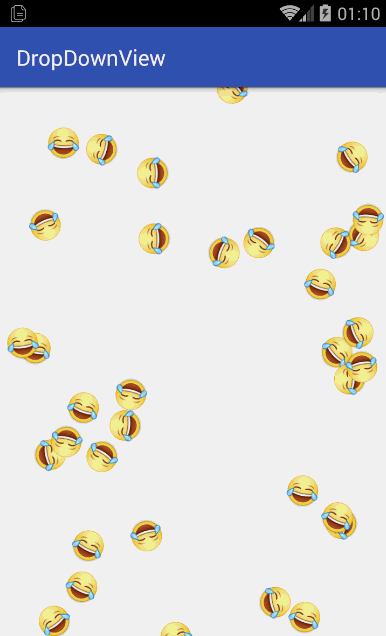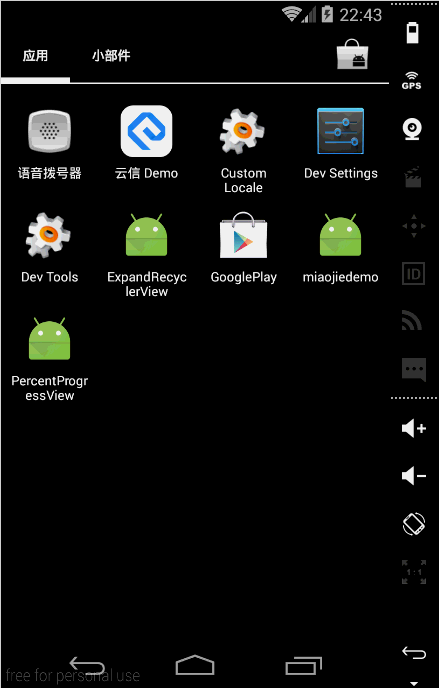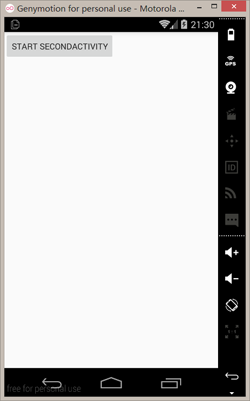从早期的 SlidingMenu 再到 AndroidResideMenu 最后到Android自带的DrawerLayout,无处不体现着侧滑菜单的诱人魅力。侧滑菜单可以拓展app的内容,充分利用手机屏幕,增加程序的可玩性。

看完了上面的gif,想不想自己也写一个呢,那还等什么,一起来看看喽。
从早期的 SlidingMenu 再到 AndroidResideMenu 最后到Android自带的DrawerLayout,无处不体现着侧滑菜单的诱人魅力。侧滑菜单可以拓展app的内容,充分利用手机屏幕,增加程序的可玩性。

看完了上面的gif,想不想自己也写一个呢,那还等什么,一起来看看喽。
效果:

看完上面的效果图,大家一定都迫不及待地想要试一试了,那就让我们来动手吧。
首先我们定义一个实体类DropLook:
1 | /** |
大家都知道一般我们使用的UI控件都是继承自共同的父类——View。所以View这个类应该掌管着onTouch事件的相关处理。那就让我们去看看:在View中寻找Touch相关的方法,其中一个很容易地引起了我们的注意:dispatchTouchEvent(MotionEvent event)。根据方法名的意思应该是负责分发触摸事件的,下面给出了源码:
1 | /** |
之前在学习自定义View的时候看到鸿洋_的 《Android 打造形形色色的进度条 实现可以如此简单》 中自带百分比的进度条,于是照着例子自己实现了一下。下面是View的样子:
大家都知道自定义View的主要步骤:
ScrollView是我们经常使用的一个UI控件,也许你在使用ScrollView的过程中会发现,当你想监听ScrollView滑动的距离时却没有合适的监听器!当然在API 23中有setOnScrollChangeListener(View.OnScrollChangeListener l)可以使用,但是并不兼容低版本的API。那怎么办呢?只好重写ScrollView来实现对滑动距离的监听了。
话不多说,直接上代码:
1 | public class MyScrollView extends ScrollView { |
Android ScrollView 嵌套 ListView 问题的解决办法
在平常的Android开发中我们经常会碰到ScrollView嵌套ListView或者是GridView的情况,若按照一般的流程我们会发现在ScrollView中的ListView显示不全的问题,其实我们可以重写ListView的onMeasure(int widthMeasureSpec, int heightMeasureSpec)方法来解决。
以下是重写ListView的代码:
1 | /** |
在初学 Android 的时候,AsyncTask 应该是大家都比较熟悉的。我们都知道 AsyncTask 可以在后台开启一个异步的任务,当任务完成后可以更新在 UI 上。而在 AsyncTask 中,比较常用的方法有: onPreExecute 、 doInBackground 、 onPostExecute 和 onProgressUpdate 等。而上述的方法中除了 doInBackground 运行在子线程中,其他的都是运行在主线程的,相信大家对这几个方法也了如指掌了。
1 | public abstract class AsyncTask<Params, Progress, Result> { |
在学习Android的路上,大家肯定会遇到异步消息处理,Android提供给我们一个类来处理相关的问题,那就是Handler。相信大家大多都用过Handler了,下面我们就来看看Handler最简单的用法:
1 | public class FirstActivity extends AppCompatActivity { |
Activity作为四大组件之一,几乎是每个人开始学习Android最先接触到的。常见的生命周期方法大家肯定都是非常熟悉的,所以Activity生命周期的顺序在这就不必过多叙述了。今天讲一下由FirstActivity启动SecondActivity而调用生命周期方法的顺序问题。
首先我们创建一个如下图的FirstActivity:
很简单,LinearLayout里只有一个Button,用于启动SecondActivity。
以下为FirstActivity的布局 activity_first.xml: